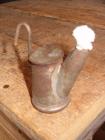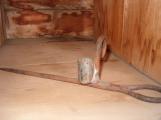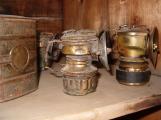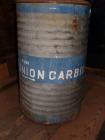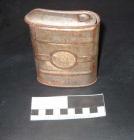1
Pony driver Bobby McNeil with pony and coal car20th Century
Unknown
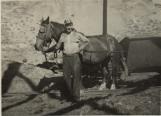 Credits:
Credits:Atlas Coal Mine Historical Society
2
A miner's personal equipment is his lifeline. That is true today, and it was true for the early miners. This equipment is his only connection to the outside world once he hits the blackness of the pit. The tools have changed little over the years: cap, lamp, brass tag, boots, pick, shovel, lunchpail, and water. What did an early miner in Drumheller carry into the black?4
In the early days, caps were soft canvas. Their main function was to hold the lamp. Later on, hard hats became the norm. The most common lamp used in Drumheller was the carbide lamp. Most Drumheller Valley mines were "open flame." The methane gas that makes coal mines dangerous is naturally low in Drumheller, due to the local geology. This allowed miners to use open flame sources of light such as candles, oil lamps, or carbide lamps.9
How to Light a Carbide Lamp with Bob MoffatSummer 2006
East Coulee, Alberta
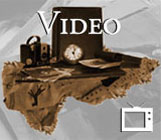 Credits:
Credits:Atlas Coal Mine Historical Society
10
MSA Bakelite Comfo Cap and carbide cap lamp belonged to John Hort6 October 1921
East Coulee, Alberta
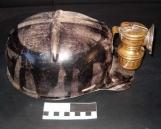 Credits:
Credits:Atlas Coal Mine Historical Society
13
Harold Lincoln Thorley, motorman/mechanic, in the Midland Mine lamphouse. Wolf Safety lamps on wall.Drumheller, Alberta
 Credits:
Credits:Garry Crittall

